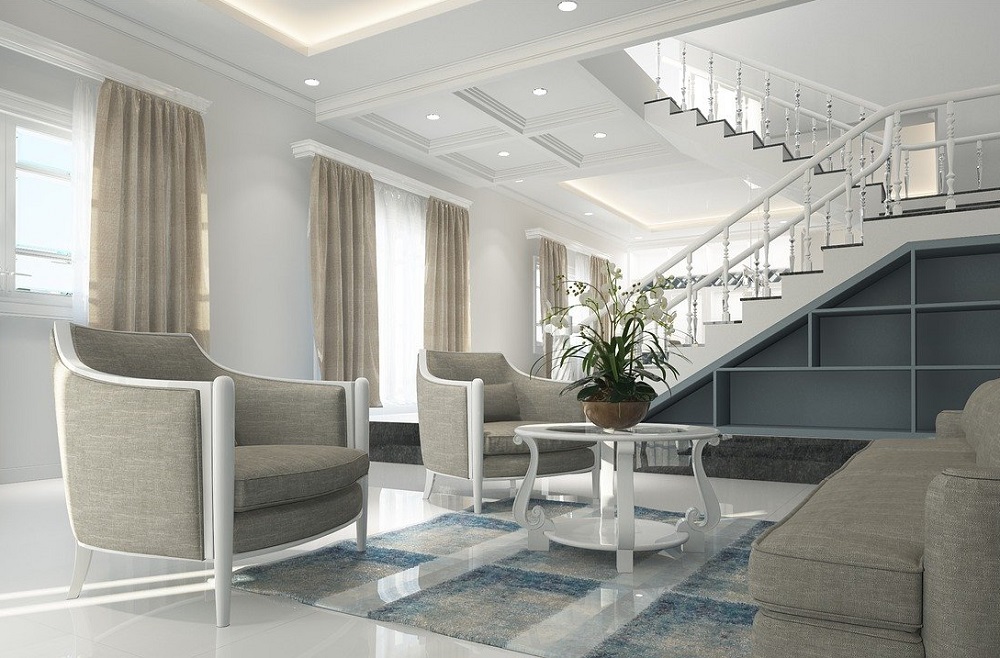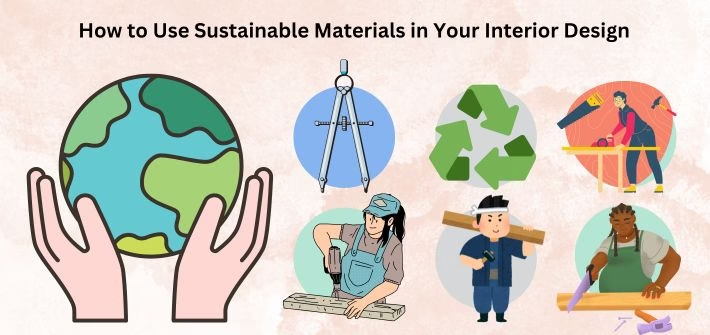Do you consider the environmental impact of the decor you choose? Today, interior design isn’t just about how a space looks or works, but includes aesthetics, functionality, and environmental concerns.
Due to the climate issues we are facing, many individuals are searching for ways to decorate their homes while keeping nature in mind. Choosing sustainable materials is one of the easiest options.
With eco-friendly materials, you can create a beautiful and green home, from the furniture to the flooring. In this comprehensive guide, I will show you how to make a functional and fashionable home using sustainable materials.
Why Sustainable Design Matters
There is more to your paying attention to design than aesthetics. Sustainable design is the practice of delineating spaces that are eco-friendly and people-friendly. Many contemporary designs incorporate eco-unfriendly materials. On the brighter side, sustainable design uses eco-friendly materials such as those which are recycled or renewable. The use of sustainable materials helps:
- Reduce or eliminate pollution and waste
- Decrease energy expenditure
- Support ethical trade and responsible procurement
- Enhance indoor air quality
Homes created with this approach are more durable while also being healthier.
Start with Natural and Recycled Materials
Designing a home becomes seamless upon the addition of natural materials and those which are recycled. Consider these options for furniture, walls, floors, and more:
- Wood – Reclaimed and FSC-certified wood comes from well-managed forests.
- Recycled Metal – Steel and aluminum can be reused and remain strong.
- Glass – Stylish and durable tops and tiles can be made from recycled glass.
- Cork – Cork is soft underfoot and naturally renewable, making it a good choice.
- Bamboo – Fast-growing and strong, bamboo makes for great furniture and dressing accessories, and is used in flooring.
These materials help reduce waste while saving on resources.
Choose Eco-Friendly Flooring
Flooring is a significant part of one’s home; thus, environment-friendly options should always be considered. Carpets take up a lot of space and are difficult to recycle because of the chemicals used during manufacturing. Instead, consider the following eco-friendly options:
- Wood Flooring – FSC-certified wood can be used to produce hardwood floors.
- Cork or Bamboo Flooring – Warm and renewable floors.
- Tiles of Recycled Glass and Ceramic – Excellent tiles for the kitchen and bathrooms.
- Rugs of Natural Wool – These rugs are free of harmful chemicals and biodegradable.
Use entrance mats of recycled rubber to keep your house clean and sharply reduce the need for harsh cleaning chemicals.
Use Eco-Friendly Paints and Finishes
While every home benefit from having outdoor air, certain finishing touches and paints can give off dangerous indoor air pollutants. To preserve air indoors, it is best to use:
- Paints with Low and Zero VOC – These do not emit harmful substances into the air.
- Plasters of Natural Clay – A Wonderful alternative for walls in an ecological sense.
- Finishes of Wood from Beeswax or Plants – These are safe products and natural.
Paint companies have ramped up production and now offer many varieties of colors and finishes for eco-friendly paints.
Choose Eco-Conscious Furniture
When purchasing furniture, look toward sustainable options. Instead of cheap polymer and textile synthetics, try:
- Furniture from reclaimed wood or vintage pieces – Preserves furniture from landfills and adds charm to your home.
- Eco-friendly fashion made locally – Smaller carbon footprint and supports local crafters
- Fabric Furniture – Hemp, linen, and organic cotton are better options.
- Space– Saving designed furniture reduces the average space occupied by furniture and the need for extra pieces to be furnished.
Furniture made of MDF and particleboard is harmful as harmful glues and chemicals are used in them.
Use Energy-Efficient Lighting
Cozy up your home with lighting, but not at the expense of energy consumption. Here are some tips to save energy with light:
- LED lighting saves up to 80% of energy and has a longer life span than regular bulbs.
- Solar Lights, especially for outdoors, cut down electricity usage.
- Use daylight, an open layout and light curtains to bring in sunlight.
Sunlight through glass, bamboo, or metal light fixtures creates new opportunities for bonsai art while adding value through recycling.

Bring Nature Inside with Plants
Bringing plants indoors enhances windows and purifies the air, helping to breathe better. The natural aesthetic improves the overall interior. Easy-to-care-for peace lilies, spider plants, and snake plants help cleanse the air. For saving space, have vertical gardens or wall herbs.
Choose Eco-Friendly Fabrics
Home decor soft furnishings like curtains and pillows are made with non-biodegradable fabrics. You can choose these instead:
- Organic Cotton – Grown without harmful pesticides.
- Linen – A natural fabric that’s strong and breathable.
- Hemp – Very strong and requires little water to grow.
- Reclaimed Fabrics – Made from discarded items like old clothes or PET bottles.
These help the environment and are more durable, which makes them a more intelligent choice.
Reduce, Reuse, and Recycle
What am I buying next? Answering this question requires no brain power if things are reused or repurposed.
Here are some suggestions:
- Decor and Storage from glass jars.
- Old doors can be repurposed into tables.
- Chairs can be reupholstered or repainted to revive them.
You can buy items directly from people in thrift shops and online markets. These items are often gently used, but offer great quality at a fraction of the cost compared to new.
Think Long-Term and Timeless
The trendy choices are not the only options available to you. As an example, a soft, passive tone would be:
- Choose warm, neutral hues.
- Spend the same amount of money on one quality product as buying a bulk of cheap alternatives.
- Invest in the latest fashions that won’t be out of style.
This method helps cut costs and preserve the environment.
Support Sustainable Brands
Prove that the items you purchase are green on the outside and inside. For environmental proof, look for certifications such as:
- FSC – Stands for wood sourced from sustainable forests.
- GOTS – Organizing textiles.
- GreenGuard – Products with low emissions.
- Cradle to Cradle Certified – Easily recyclable products.
Purchasing from these brands ensures your eco-friendly choices support clean sourcing and fair labor impacts.
Conclusion
Using eco-friendly materials for your home is one healthy and environmentally responsible option. It shows that you care beyond yourself and your home, and it demonstrates caring for a much larger cause. The situation improves significantly when you use natural wood, recycled metals, eco-friendly fabrics, low-VOC paints, and even small changes like doormats made from recycled materials. The secret to all these actions is the long-lasting results. No matter how small, every choice is good when done in an environmentally friendly way.

